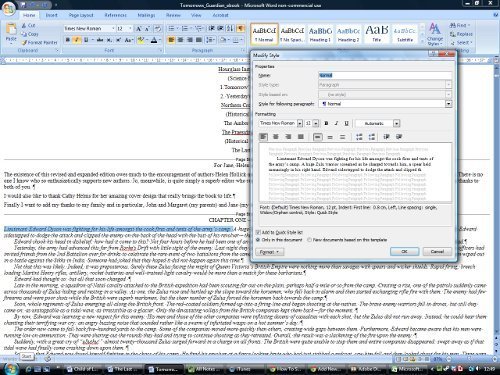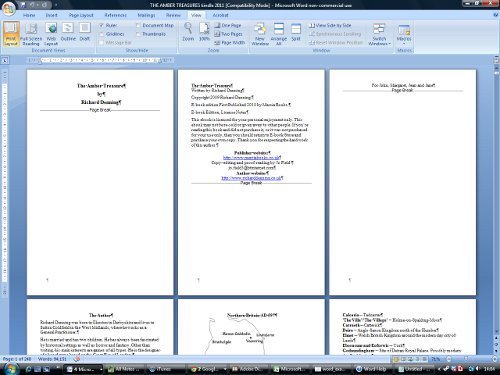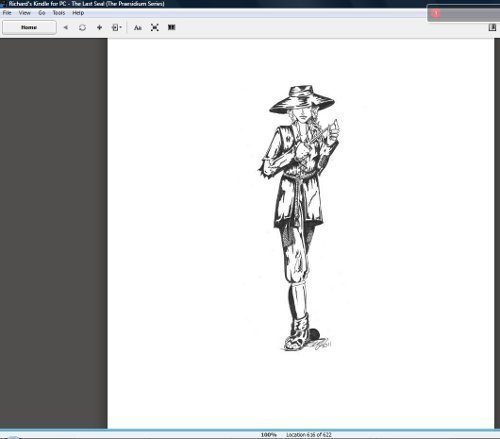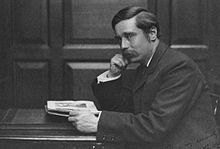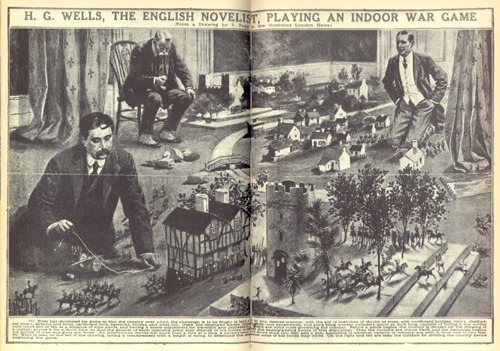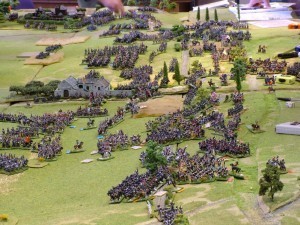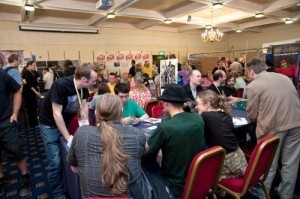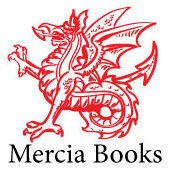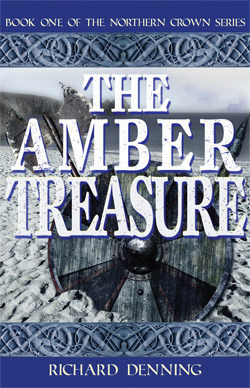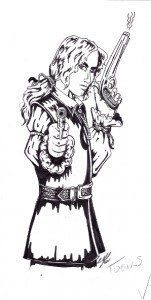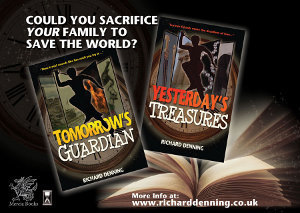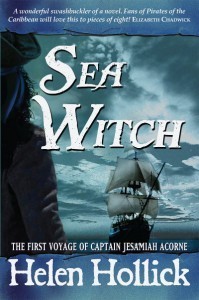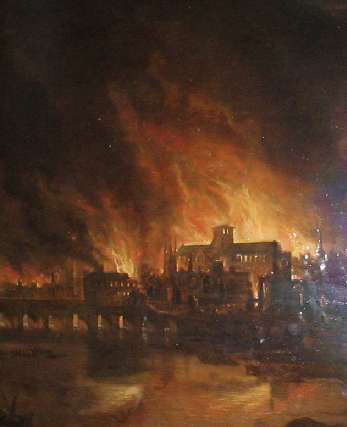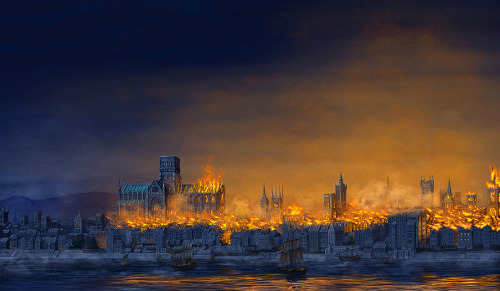Richard Denning's Blog, page 15
September 25, 2011
How to prepare a book for Kindle
It has been a while since I wrote an article on e-book conversion to Amazon Kindle and I decided to do another one having had a few questions on this subject.
The Easy Way
Smashwords.com is a US based E-book retailer. It is possible to upload your e-books to them and they will convert to all the various e-book formats including phone apps. They will distribute to Apple, Sony, Kobo and Amazon. So if you want to use this route, it is the easy way in. I recommend it.
Smashwords have a Style Guide. If you are converting ebooks then I suggest you download and print off the Style Guide.
Work through the guide with your book open on a screen and the Style Guide next to the PC. If you follow the guide to the letter you really can't go far wrong.
Then when you have the word doc ready to upload to Smashwords you will find that SAME document is basically ready (almost) for uploading to Kindle. However there are a few tweaks you still need to make.
What follows is a walk through of starting from your original manuscript, processing it as per the main parts of the Smashwords Style Guide and then the final preparation of the Kindle File. If you are following the smash words guide you can skip to OK lets get the Kindle File Ready (The KDP issue) (although you may still need to add in a table of contents if you want)
What I have here is the process I follow when making a kindle file.
Horses for courses
The first thing you must realise is that your carefully laid out manuscript that you prepared for your paperback version (assuming here that you are self published), is basically far from ready for e-book conversion. The paperback will have fixed page sizes, margins and page numbers. E-books have none of that. IN an e-book reader – YOU THE READER – determine font sizes, lines per page etc and so the file must be formatted without anything which will muck that up. Likewise blank pages are hated by e-book readers and you need to remove these. Gaps between lines are an anathema and even double or more spaces between words dont go down well.
Word contains all sort of hidden codes that can make a mess of your ebook. Thus we are going to have to do some work to get it ready.
Why not use a Pdf I hear you ask. Well you might be lucky. Amazon Kindle WILL accept a Pdf BUT it is a lottery as to how they turn out and usually are horrible when converted.
He's got style
Firstly I create a empty book which I am going to make sure has the right styles set up. Word often contains ODD formatting in its styles. Styles are applied to word as you type. If you do nothing the NORMAL style template is applied. It is best if this style is basic. BY basic I suggest you set it to Times New Roman and font size 12. You want to remove all funny fonts from this ebook. Styles are accessed from top right of word. Right click Normal … modify and then change the set up. Save as "myebook.doc" BUT NOT DOCX.
Rip it up and Start Again
What I do when converting e-books is to start from totally plain text. So I open up the word doc of my finished paperback document.
TWO choices:
1. You can save the doc as a plain text txt file, close it down and then reopen it.
OR
2. What I prefer to do is SELECT ALL (CTRL-A) and COPY (CTRL-C) and then paste it into NOTEPAD. Notepad only handle plain text.
So now with a wimper I have destroyed ALL my formatting. I then PASTE the plain text into "myebook.doc" which I earlier set up.
Hopefully you will have a document formatted to Font size 12 Times New Roman.
It should not have any page numbers and should be standard A4 size or US letter size.
The Show/Hide Icon- your helper
This icon is something that authors should be familiar with. You use it to show the hidden little symbols that show where you have spaces, new paragraphs etc. Having it selected when formatting your e-book should be routine.
DONT TOUCH THAT TAB BUTTON
OK we are about to tidy up our ebook. One thing to remember is NEVER use the tab key. It has NO ROLE in ebook formatting.
When you start a new paragraph in an ebook you have a choice of two methods. ADD an extra line (I will come to that) OR use the ruler to control the indent.
Keep an eye on the ruler
I use the ruler tool in word a lot. You can make it vissible by an icon on the RT side of the programme.
When running it shows you 1) Where the margins are set (used in the paperback) and 2) The current indent for new paragraphs. You can drag the little triangles to the relevant locations.
So when I have my ebook open I CTRL-A to selecet it all and then drag the number 2 triangle accross a few characters to create the same indent for teh whole book.
Then as we go through we can always modify the indent for specific locations.
OK Lets work through this document
Before we start I will select all and makse sure it is LEFT+RIGHT justified. So we now have a WORD doc formatted to Times New Roman font 12 with an indent at the start of each paragraph. We now work through it formatting as we go.
Front Matter
I usually highlight all the front matter and CENTRE Justify it. I might reduce the Font side to 10 or 11 for the "small print and copyright stuff". Make sure all the website links to Author Pages, Publishers and anyone else have a hyper link set up by selecting it and clicking insert hyperlink.
At the end of each Page of the Front Matter I insert a page break after the very last line. This will mean that Kindle will start each part of your front matter on a new page. So I have:
Title Page / page break
Copyright page/page break
Dedication/ page break
Author page/ page break
etc etc.
Spaces between lines
Do you notice that I had a larger gap between some lines in those pages? How did I do that? Well I DODNOT do it by just hitting the enter key. You should NEVER add an extra line that way.
Use the Line Spacing icon from the home screen. Make sure the cursor is flashing at the end of the line you want to add extra space afterwards. Choose line spacing options and then set the AFTER setting to say 6 or 12 pts. This will now leave a larger space before the next line.
Table of Contents
In a non fiction book you will want a table of contents. In a fiction book you MIGHT want one. It is not essential. If you decide to put it in have a page with somthing like:
Table of Contents
Chapter 1
Chapter 2
Chapter 3
etc
I will tell you how to link this in later.
Formatting the body of the Text
We now move onto chapter 1. The chapter heading should be selected, justified centre and the indent removed (drag the triangle number 2 so it matches triangle number 1). I usually change the heading to Font 14 and Bold. I usually add an extra line after the title using the method I mentioned before.
Finally I remove the indent at the start of the text itself as the start of a chapter or section should not have an indent.
The body of each chapter should be nicely formatted now but you may wish to add extra space at the start of a section in the middle of a a chapter and to remove the indents.
Finishing the Table of Contents (TOC)
As you work through the book highlight each Chapter Heading and insert … bookmark. Call the bookmark Chapter 1 or whatever. When you have all the bookmarks in place go back to the TOC and highlight the line for chapter 1 and then insert hyperlink and choose the bookmark CHapter 1. Repeat until you have linked all chapters into the TOC.
Images
If you have images in the ebook when we converted to plain text they will have gone.
Before you add any images to the book it is best to format them to greyscale and resize them to a maximum of 500 wide by about 600 high so they fit on a screen. Go through the book adding them back in. Then highlight each image and select format picture … compress … web/ screen to Reduce File size of the final e-book file – which is best for fast loading etc.
OK lets get the Kindle File Ready ( The KDP issue)
I assume you have set up an account on Kindle to upload to. Go to kdp.amazon.com if not and get one set up
With Kindle direct publishing you need really to upload a HTML file for best results.
If you just upload the Word doc NO IMAGES will show and all sorts of naff word code gets dragged in. So convert it to html first.
The best way to do this is to open Word and click file…save as.. webpage … web filtered

Save as Web page filtered
Doing this removes a lot of rubbish WORD code from your book. If you don't do this you end up with a document for instance with spaces between each line throughout the entire book.
BUT when you save as a web page – as a HTML file – the images are stripped out and put in a folder which is referred to by the main HTML file. If you just upload THAT HTML file without the images folder you will find the images dont show up and all you get is little warning icons !!!
The Solution
The answer is to zip up the HTML file and the images and upload that to Kindle DP. This is how:
Create a folder on your computer. Call it anything you like e.g. myebook.
Open the word doc of you book (the one you have formatted for Smashwords and then edited ready for Kindle.)
Save it as a web page filtered and save it INTO that empty folder you created in 1.
Open the folder and you will find a HTML file called booktitle.html AND a subfolder called booktitle files.
Take look in that book title folder and you will see all the images from your book probably called image01.jpg etc
What you do is now come out of everything then find that myebook folder. RIGHT CLICK on it and you will get a list of options.
One of the options is send to. If you select that you will get further options one of which is send to compressed (zipped folder). Select this.
You should now see a file called booktitle.zip in the same location the myebook folder was in.
Its THAT zip file that you now upload to Kindle.
When you have set up your book in Kindle DTP and you get to the bit asking for the book file use THAT zip file.
To check all is ok open up the preview and you should see images in it. Go ahead and publish the e-book
When the book is setup download the kindle book and check it out.
That's it.

RT click the Myebooks folder and choose send to Compressed (zipped) folder
Assuming all goes well you should get a nice greyscale image on your kindle:
I recently followed this procedure to upload my new Kindle version of The Last Seal – my historical fantasy set in the Great Fire of London 1666.
Do me a favour and check out the FREE sample on Kindle.
http://www.amazon.co.uk/dp/B005CC4RSC
http://www.amazon.com/dp/B005CC4RSC
September 21, 2011
H.G Wells – a founding father of Science Fiction
I have two significant reasons for being thankful to Herbert George Wells (21 September 1866 – 13 August 1946). Firstly of course he was a writer who came out with a number of books of science fiction which along with his near contemporary,Jules Verne had influence on the evolution of the genre in the twentieth century. Secondly, although much less well known, he enjoyed the hobby of Miniature Wargaming (playing with toy soldiers) which I discovered at the age of 12 and I still pursue when I get the time. In fact I got into wargaming before I later discovered the joys of boardgames and roleplaying at university and which I tend to do more often these days.
Wells was born in the town of Bromley which is near London. His father was Joseph Wells – a shopkeeper of limited financial means who supplemented his income by earnings from playing cricket. Joseph injured his leg when Herbert was in his teens and the loss of income from cricket meant that his mother Sarah had to return to work as a domestic servant.
In 1874 Herbert broke his leg and spent weeks laid up at home. To pass the time he read extensively and this clearly had a good deal of influence on the young lad. Herbert's education was restricted by the families poor finances. At times he was a student pupil - teaching younger boys as part of his payment for getting an education. He did well in Latin and the sciences. Later he was educated at the Normal School of Science in London. Between and whilst attending various schools he first worked as a draper's apprentice and later a bookkeeper. He was never successful at these careers and eventually set out on a career as a Free lance writer.
Romantic Life
Having no money he moved in to stay with his aunt where he became engaged and married a cousin, Isabel Wells, but left her in 1894 for one of his students, Amy Robbins. he remained married to Amy until her death in 1927 but had numerous affairs leading to various illegitimate children.
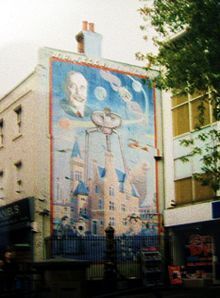
Mural in HG Wells home town of Bromley
Writing Career
In 1895 Wells wrote and published The Time Machine – one of the early novels to explore this fascinating concept. Although it takes a somewhat dark view of the future (influenced by Wells own pacifist views and feelings about society and social classes) it is certainly a novel which along with the film version got me thinking about Time Travel in my own writing.
The Time Machine was followed by The Island of Doctor Moreau, The Invisible Man, The War of the Worlds, When the Sleeper Wakes, and The First Men in the Moon. Wells also wrote some non fiction and literary fiction – again usually commentaries on the times, war and social classes.
Politics
Wells held broadly socialist views, was a member of the Fabian society and ran as a Labour candidate in two elections. He held generally pacifist view but supported the First World War and in particular rejected calls for an early peace as such peace would involve the German nation retaining control over large populations in Africa which he opposed. He had strong feelings about inequalities between classes and wrote about these at length in both his science fiction and other works.
Wells believed in a One World state – gradual unification of all nations and therefore opposed Zionism as separatist and divisive in his opinion.
Religion
Wells was a theist – believing in a god but denying that any one world religion is right.
Little Wars
IN 1907 HG Wells produced a book about playing games with Toy Soldiers called little Wars that inspired the early generations of wargamers to get out model soldiers and start building hills and houses and rolling dice and refighting Waterloo.
A sign of his male orientated times (and with appologies to lady readers) he introduced the book with: "A game for boys from twelve years of age to one hundred and fifty and for that more intelligent sort of girl who likes boys' games and books"
Below: A modern Wargame
In later life Wells developed Diabetes and actually founded the patient support group Diabetes UK. His writing deteriorated and he became embroiled with projects and obscure problems – often pursuing local matters (such as falling out with neighbour) obsessionally. He died at the age of 79.
He predicted many things that came to happen – just as World War Two and the importance of Air power in war. As his epitaph he left the comment "I told you so. You damned fools."
I wrote this entry on the anniversary of Wells birthday. So thanks Herbert for the Sci-FI and the Wargames. Its your fault!
For more on my Time Travel Novels for teens go to: http://www.richarddenning.co.uk/tomguard.html

September 15, 2011
I have this idea for a board game…
Or how to get a board game published
Why ask me?
I run UK Games Expo – the UK's largest non electronic multi format hobby game convention. By this I mean we have board games, card games, roleplaying games by a multitude of games companies in an event over 3 days that attracts 2500+ people. Now in its 6th year, this event hosts companies showing all their new games on tables where the visitor can sit down and try them out. I am also the designer of the board game Great Fire of London and have my own game design house Medusa Games.
For these two reasons I often get emails along the lines of "I have this idea for a new game, how do I get it published?" This article is going to cover some of the answers. Here then are some tips.
Do your research: Find out what is out there.
I should say right from the start that I have published – so far – one board game. Four books but only one board game. Yes I have others in development BUT that is so far the extent of my publishing expertise. There are many designers out there who are vastly more prolific than I and if you are new to board games you probably think board games are restricted to Cluedo (Clue), Scrabble, Monopoly and Trivial Pursuit. What you need to realise is that there are hundreds of companies producing many hundreds of new games each year. The competition is huge. So you first must do some research. You need to find out a bit about what all these companies are and what the games are. Find out also what the audience wants
So go to Board Game Geek. This is the focal point on the internet for all things related to board games. See what games are popular. Look at the forums and get a feel for what is liked and disliked.
Next get to a convention:
The largest board and card game convention in the world is Essen Spiel each October in Germany. 150,000 board gamers visit this over 4 days. There are 400 or so companies and 700 new games each year. Just walk the halls and see what is being made.
In the UK come to UK Games Expo in June. In the USA Origins or Gencon Indy are worth a visit.
Play the games, meet the designers and make some contacts. Get a feel for the different sort of game mechanics (the ways games work) and see how the successful ones often have a novel mechanic going on.
Playtesting and Prototypes
The process of publishing a board game is a little like writing and publishing a book. Indeed some companies call game designers the GAME AUTHOR. You first produce a early version and begin play testing it. This will be cardboard and sellotape and made on your home PC. You need to see if the game MIGHT work. This means getting players (often friends and family) to play the game over and over again till they and you are sick of it. The game will go through various versions, akin to drafts of a book and just as an author needs an editor to see what does not work in a book, a designer needs play testers to pick up on the flaws in a game concept. After many plays the game design will take shape.
It is a good idea to bring the game to a convention such as UK Games Expo or one of the several smaller local cons that attract a couple of hundred gamers as you can get feedback from players. Taking it to a games club is a good idea as well. be prepared for negative remarks and the need to go back to the drawing board. I have abandoned several game designs in the early stages.
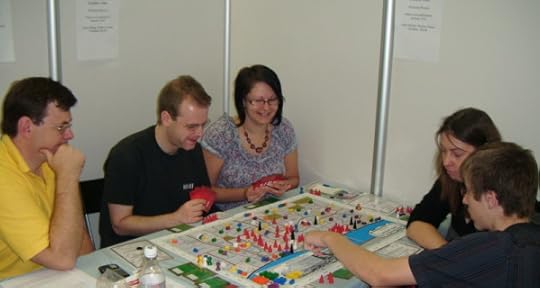
Playtesting an Early Version of Great Fire at Essen 2009
OK I have a working game now what?
You now need to get a publisher. Here you have the choice of doing it yourself if you can find printers and component manufacturers or using an existing company. Just like an author landing a publishing deal you will need to convince a company that you have a game people will buy. If you have gained contacts in the gaming world you will occasionally find one of them would consider helping the game become a published game IF they feel it has merits.
This is where taking the game around the conventions can be of value because if a game has legs gamers will recommend it and a publisher might take notice. Alternatively pitching the game idea to a publisher is an option. Again by having done your research at BGG and by visiting the cons you will know who the companies are and have chatted to some and find out who is likely to be open to game proposals and who is not wanting game ideas.
The key thing at this stage however is DO NOT approach a company until you have a game well developed and play tested. Don't turn up with an idea that you have played twice. There is a serious risk it will fall apart on play testing. Get it right first. In this regard writing books and designing games are identical.
My Game in print!
Finally if all goes well the game gets released. It is good to link this to a large convention. In the UK the UK Games Expo is the one to choose but the largest in the world is the immense Essen Spiel. Getting a stand there is a good way to reach a large audience of board game enthusiasts. We sold almost 400 games of Great Fire in 4 days there.
Retire on the proceeds!
Now do not get the idea that you can retire on the proceeds. Just like publishing books MOST games will not sell much. You can also forget about being the next Scrabble, Monopoly or Cluedo. Just as it is hard for new authors to break into the mainstream so is it VERY hard to get anywhere near a high street store. But like with books there is pride in producing a game and saying – look what I did.
Why all this talk of hobby games: surely I need the mainstream marketplace?
This leads to a final point. I often get asked by potential game designers "should I approach Waddingtons" . They have the idea that they sell the game to a BIG multinational and it is in the high street shops for Christmas and they sell millions of copies. The problem here is that only a VERY few NEW games are made each year by these big companies. Think about it – when you go to a toy shop you see endless versions of Monopoly or Trivial Pursuit. 700 new games are released each year at Essen. Only 1 or 2 MIGHT manage to penetrate that mainstream market. Most mainstream customers - your aunt Flo for example – buys one new game maybe in a year. Probably a copy of Monopoly for a niece that never gets played apart from on Boxing day.
You MIGHT be the lucky one. It is more likely however that the big multinatinals wont even look at the game.
If you instead target the game for the thriving if much smaller Hobby Game market and the game is good and you do your marketing right then it is MUCH more likely that you could sell a few hundred games to hobby gamers who love their games and each buy a good number a year. If you can get a little following then later games your make might sell too. The reality is that many companies and designers are disappointed and loose money at this business. Some better organised ones cover their costs, have fun along the way and enjoy the business. A few companies (and here I mean a tiny handful in the UK make a bit of money.) So having a realistic attitude is the right way to go.
Take home message:
So get online now and learn about the world of games via BGG.
Find out abut local games clubs and get to them and start playing games.
Then get to Essen , Expo, Origins or Gencon (and other cons).
Get your game playtested A LOT.
Then – and only then approach publishers.
Good luck and see you at UK games Expo!
September 13, 2011
Team building for the Indie Writer
I am a self published writer OR possibly you could describe me as an Indie because I have my own publishing house, Mercia Books.
I have already blogged about how to self publish and how I went about doing it. What I wanted to touch on in this article was what I feel is critical to the self published writer – the need to build up a little team of people that bring their own expertise in order to publish well edited and well presented books.
The roles of the team members are dependant on what you can manage your self and where you need help. But you need to spend time finding the right people you can deal with in the way you want to deal with them. This often comes down to personalities, working habits and hours, ease of communication.
You can't do it all alone!
What I want to say is that a self published author needs help to make a success out of publishing. If you use a self publishing company much of that might be done for you and providing you are content with the companies choice of cover artist and editor that is fine. However firstly you may prefer to use your own contacts and secondly, dependant on the company you may in fact find that you HAVE to source these your self or would prefer to.
What roles?
What roles am I talking about? Well this now depends on you. As author you have written the book. You have sweated blood over it and made it the best you are able. So you can write. The question is are you able to edit the book? Can you design the cover. How are you at IT? You may have some of these skills but it is unlikely that you have them all and even if you do, can you spare the time to do all of them.
Editing
This is a role that I would argue that you SHOULD NOT do yourself. Obviously as you write the book you will revise it several times and you will in fact undertake a lot of editing in the process. However you reach a point when you need to hand over the manuscript to someone else. There is no harm in bringing in First Readers to give you feedback and spot a glaring anomaly but eventually you need a professional editor to work through, chapter by chapter and scene by scene and help you polish the manuscript to the best it can be. Take a look at my article on the basics of editing fiction for more on this.
I personally use a superb editor called Jo Field (link on my website)
Cover Design
You may be able to do this your self if you possess the skills BUT a good graphic artist will be able to come up with ideas and suggestions to give you a cover that folk will pick up:
There is also more to design than just slapping a few images onto the page. If you are self publishing you may be dealing directly with a printer who will expect print ready files set out to strict specifications. In my case Avalon Graphics can do all that and provide me with a file for uploading to my printers.
Internal Artist and Drawings
In the case of The Last Seal, I engaged a sketch artist – Gill of Helion's Art to draw the characters of The Last seal. These add interest and value to the book.
Promotional Material
Someone is going to have to design all those bookmarks, postcards etc that you want to be able to give away at Book Fairs, school visits or wherever. Again some folk may possess those skills but a decent graphic artist can manage all that for you.
You Tube Video
Book trailer videos are all the rage these days so finding someone to design and create one should be part of your plan.
Websites and blogs
The website and blog should be the focal point all your promotional material points to. But that means it MUST look good and work well. So bringing in a web designer is a sensible part of the plan.
Marketing Manager
You may decide to bring in a marketing manager to help manage your publicity campaign for you. These are not cheap and you need to weigh up the benefits against the costs.
E-book Maker
Converting doc manuscripts into e-books involves a few stages that some people may find too hard. If you lack the technical ability you may need to employ some-one to do this.
Printer and distributor.
If you are self-publishing via a company you probably do not need to worry about this. In my case, Mercia Books is a publisher and I use Lightning Source to print the books. They have a distribution arrangement with Amazon, the book depository and can ensure the book is listed on line. Getting it into book shops is vastly harder and usually relies on personal contacts or showing enough interest exists in the book.
So those are some of the elements and roles that I use and which provide THEIR expertise to helping produce books for Mercia Books.
Do you have other suggested job that you need to fill as a self published author?
September 6, 2011
Reloading History – the appeal of Historical Fantasy
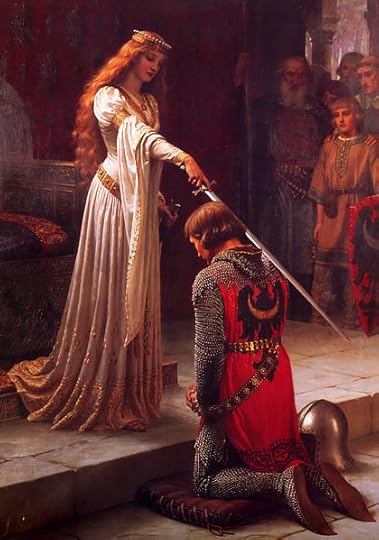
I have always been fascinated by historical settings but at the same time I adored a good fantasy book. So, in my reading, I have devoured the Lord of The Rings, the Disc World Novels and a good chunk of fantasy published in the last thirty or so years. I have also read a lot of historical series such as the Sharpe, Saxons and Longbow series by Bernard Cornwell and the Flashman novels by George Macdonald Fraser and many others. As these two twin sources of inspiration have both had such a strong influence on me, it is not surprising that I would write and publish a book – The Last Seal – where the fantastical world of demons and sorcery is blended into the historical events of the Great Fire of London in 1666. This fire was able in 4 dramatic days to destroy the medieval heart of the third largest city in the world.
I am not alone in having written historical novels where there is a fantasy element – either the blending in of elements of sword and sorcery OR the laying out of an alternate version of history. Indeed, this is a thriving and popular genre of fiction. In this post I am going to take a look at some examples of this type of literature.
We should start with a definition. What IS Historical fantasy? Briefly, it is a type of fiction where the setting is that of earth at some point in its history or is based upon our history but where often something different has happened. There are three broad approaches and sub genres:
Firstly – as in the case of my novel – magic, mythical creatures or other supernatural elements exist in our world perhaps with the majority of people unaware.
As an example of this consider Sea Witch by Helen Hollick. This is a pirate story set in the Caribbean, America and in South Africa. The setting is authentic, the description of pirates and the world in which they exist most definitely rooted in the time period. Yet there is a difference. A goddess exists beneath the ocean and the heroine is a white witch.
Another book of this type is Jonathan Strange and Mr Norrel. This is set in the year 1806 in England. The Napoleonic wars are raging in Europe. At this time magic is an academic subject only and is no longer practised. However there is a prophecy about the return of magic to England which in the end leads to a battle between two powerful magicians.
Secondly a historical fantasy novel might take place in an alternative history with clear differences from our own. Perhaps the Normans lost the battle of Hastings or the industrial revolution never took place.
One of the most famous authors of alternate history is Harry Turtledove. He is incredibly prolific in this genre. In How Few Remain a linchpin event of the American Civil War – General Lee's orders (which in reality were captured by the Union on the eve of the Battle of Antetan) are recovered and so, as a result, the South surprise the Union army and defeat it winning the war and becoming independent. A whole series of Great War novels follows with the Union and Confederacy taking alternate sides.
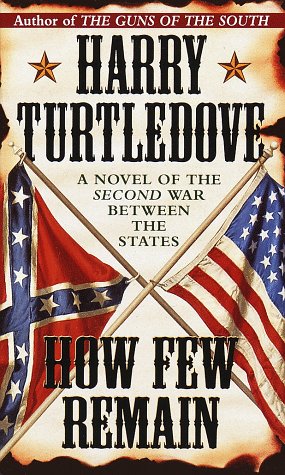
The Michael Morcock's Hawkmoon books take an interesting approach in placing the stories in a future (maybe post apocalyptic world) where there is magic and fantasy in a world where sorcery is now science.
The third type of historical fantasy is where the story takes place in another world with recognizable parallels to real world historical periods. In some ways this describes the bulk of fantasy novels many of which are set in the medieval period. Some are clearly based on a definitive historical period whereas others are more loosely inspired by a generic idea of knights and castles etc.
Raymond Feist's Daughter of the Empire is set in a fantasy world which is very definitely based on medieval Japan with the equivalent of Samurai and codes of honour etc.
Guy Gavriel Kay's A Song for Arbonne is set in a fantasy world which is inspired by the south of France again in the medieval period.
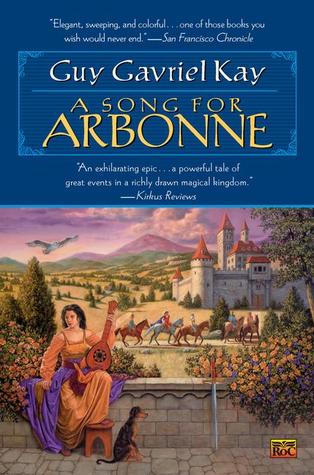
I think that the appeal of Historical Fantasy is the opportunity to explore history in a different way. You can play "what if" games. What IF Richard III had found that horse at the Battle of Bosworth? What if the Spanish Armada had landed and invaded England in 1588. Historical periods also create fascinating inspiration for an author and many ideas for other stories that never did happen but are great to read about. Finally much of human fears and imagination is linked to magic, supernatural elements and the possibility of what is hiding under the bed or down that dark corridor. Bringing that into our mundane world is fascinating and appeals to many readers – witness the widespread appeal of Harry Potter.
When I was researching the Great Fire of London I began to realise that the people of London in 1666 in many cases really believed in magic and witches, plots and secrets societies, omens and portents of doom. It was only a short step then to creating a fantasy story based around a demon trapped under the city and rival parties battling it out with gunpowder and sorcery over control of the demon. If that type of story appeals to you can find out more on my website.
This article is one of a series connected with the release in August of the new paperback of The Last Seal my historical fantasy set during the Great Fire of 1666.

September 5, 2011
Fourth Day of The Great Fire 5th September 1666
Wednesday 5th September – Hope at Last!
Home; and whereas I expected to have seen our house on fire, it being now about seven o'clock, it was not. But to the fyre, and there find greater hopes than I expected; for my confidence of finding our Office on fire was such, that I durst not ask any body how it was with us, till I come and saw it not burned. But going to the fire, I find by the blowing up of houses, and the great helpe given by the workmen out of the King's yards, sent up by Sir W. Pen, there is a good stop given to it. . Samuel Pepys Diary for 5th September 1666.
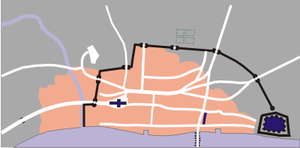
Extent of fire damage on 5th September – same area as on 4th (with thanks to wikipedia for image)
The Wind Drops
On Wednesday the 5th September the strong wind which since Sunday had been blowing the fire west and north finally abated. The army contingents had now created significant fire breaks by virtue of blowing up housing. The effect of these two combined was such that the fire stopped spreading and no significant growth in the area affected by it was reported this day.
Pepys Explores London
According to his diary Pepys walked all over the city, clambering up half burnt out church towers to get a feel for the devastation. He witnessed the teeming throngs of thousands in their encampments around the city such as Moorfields and then returned to the area around his office and his house expecting that they would be inflames but was relieved to see that this was not the case. You can feel his relief in that passage from his diary.
Retribution
That Wednesday night a rumour went about on Moorfields that 30,000 French and Dutch (who the Londoners believed had caused the fire) were on the way to finish the job, and slaughter the population. The mob rose up and attacked anyone suspicious and the King had great difficulty restoring order.
Over at last
The fire smouldered on into Thursday but by midday it was considered completely under control and thoughts turned to trying to determine the cause, assess the damage and plans for rebuilding. It is estimated that the destruction included 13200 houses, 87 churches, 44 Guild Halls, St Pauls Cathedral, Baynard's Castle, the Royal Exchange, Newgate prison and many other important sites. Maybe 1 person in 3 or 4 of greater London was made homeless. Something like £14 Billion of damages in today's terms was caused. Although many were made scapegoats, and one poor Frenchman was hung for confessing to starting the fire even though it was clear he was mentally ill and could not have done it, it was eventually put down to the will of God.
Monument
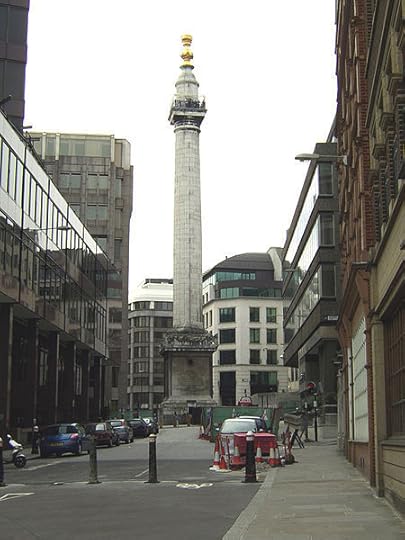
Near the site of the original bakery where the fire had started a monument was constructed. On it read the words:
"Here by ye permission of Heaven, Hell broke loose on this protestant city."
A modern version of the monument (near the Underground Station that shares its name) is still there today.
See: Tuesday 4th September – The Fire at full Fury
This article is one of a series connected with the release in August of the new paperback of The Last Seal my historical fantasy set during the Great Fire of 1666.
September 4, 2011
Third day of the Great Fire of London: September 4th 1666
Tuesday 4th September – The Fire at full fury!
Now begins the practice of blowing up of houses in Tower-streete, those next the Tower, which at first did frighten people more than anything, but it stopped the fire where it was done, it bringing down the houses to the ground in the same places they stood, and then it was easy to quench what little fire was in it, though it kindled nothing almost. W. Hewer this day went to see how his mother did, and comes late home, telling us how he hath been forced to remove her toIslington, her house in Pye-corner being burned; so that the fire is got so far that way, and all the Old Bayly, and was running down to Fleete-streete; and Paul's is burned, and all Cheapside. I wrote to my father this night, but the post-house being burned, the letter could not go. Samuel Pepys Diary for 4th September 1666.

Extent of fire damage on 4th September (with thanks to wikipedia for image)
Tuesday 4th September 1666 was the worst day of the Great Fire of London. The strong wind was still blowing north and west and was driving the inferno onwards. This was the day when panic really began to set in at Westminster. The king's court began making plans to evacuate even though the fire was still some distance away. Yet there was hope even in the midst of unbelievable destruction.
The Fire Jumps the River Fleet
James, Duke of York and his men were working flat out to try and stem the westward flow of the fire. They had hoped that the River Fleet – a refuse filled sliver running south towards the Thames – would be a barrier to the fire. This was a vain hope as the fire jumped the river and ignited buildings on its west bank and then advanced on towards the Temple and the Inns of Court. Despite the disappointment, James carried on pulling down buildings, trying desperately to create a fire break in the west.
The Great Church Burns
St Paul's Cathedral was one of the wonders of the Christian World. Its spire (which fell down after a storm some years before) had been one of the highest in the world and it still loomed over the city. It was natural that people should put their faith in its vastness. As the fire rolled west towards the cathedral that Tuesday those living in the area, including the booksellers that populated the region around it hurried to push belongings into the vault and interior and up against the walls hoping the churchyards and the stone walls would protect them. This proved a vain hope.
The church had been neglected during the years of the Commonwealth and in 1666 Christopher Wren had erected scaffolding to help him restore it. That same scaffolding caught fire. the fire spread to the roof and soon the structure was inflames – a vast fireball in the centre of the flaming city.
The fire was so hot that the roof tiles melted and lead ran down the street. The tombs and coffins burst asunder and corpses literally fell and leapt out of them including a remarkably preserved bishop of two hundred years before who landed on his feet and became, after the fire, a celebrity visited by celebrities and common folk.
Samuel Pepys lends a hand.
The first glimmer of hope that the fire could be contained started when parties of soldiers, one led by Samuel Pepys, rolled barrels of gunpowder from the Tower into the streets nearby and started blowing up whole blocks of housing. This proved one of the only effective means of stopping the fire. In the east – where the fire had been approaching the Tower itself – the fire was under control but in the west the fire incinerated Cheapside and the city markets and rolled on by the Cathedral and seemed as unstoppable as ever.
In the fields around the city a vast population settled down to sleep rough through the third night of the fire, many believing that the end of the world had truly come.
See: Monday 3rd September - The Fire Spreads
Tomorrow: Wednesday 4th September – Hope at last!
This article is one of a series connected with the release in August of the new paperback of The Last Seal my historical fantasy set during the Great Fire of 1666.
September 3, 2011
Second day of the Great Fire of London: September 3rd 1666
About four o'clock in the morning, my Lady Batten sent me a cart to carry away all my money, and plate, and best things, to Sir W. Rider's at Bednall-greene. Which I did riding myself in my night-gowne in the cart; and, Lord! to see how the streets and the highways are crowded with people running and riding, and getting of carts at any rate to fetch away things. Samuel Pepys Diary for 3rd September 1666.
By Monday morning, with the fire 24 hours old, the flames are spreading quickly west and north. Yet still no real efforts to contain the fire have been made,
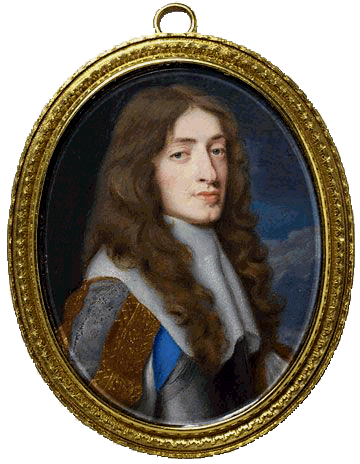
James Duke of York
The Duke of York is given command
The Lord Mayor appears to have abandoned any effort to fight the fire. After his failures of Sunday, Bloodworth is not mentioned in any accounts and is not certain what he was doing or where he went. Technically direct authority over the city of London lay in the Mayor's hands and most definitely NOT the King. Indeed on the Sunday the mayor had turned down offers of direct help from the king. Charles ignored this and did send troops. ON Monday with the Mayor having thrown in the towel, Charles decided to take definitive action and appointed James, Duke of York and his own brother the task of coordinating the fire fighting efforts. James took to the task at once and deployed regiments of his own soldiers on the street. He had to contend with two main problems in order to get near the fire :
Paranoia and Blame
The people of London, terrified of the fire and furious at the destruction did what most men and women do at such times. They try and find someone to blame. In London in September 1666 there were plenty of people to blame. England was at war with both France and Holland in the Second Anglo Dutch War. So any foreigners - especially from Holland or France were set upon in the streets and accused of Arson. They were searched and if matches found were beaten or even threatened with hanging. Astrologers who had predicted a terrible calamity on 1666 were also suspects as were manufacturers of fireworks. Fear of witchcraft meant that some women were attacked – even a poor girl who was caught carrying a chicken in her petticoat which was mistaken for a fireball that she was about to throw. Because of fears of another Gunpowder type plot Catholics were also accused to starting the fire.
Save what you can!
Utter panic set in during Monday as the city folk realised that the destruction could be extensive. Thousands of Londoners evacuated whatever belongings they could in cart, on foot or by boat. Some folk with the eye for making a quick fortune began hiring out carts and boats at exorbitant rates. A cart which before the fire would cost a couple of shillings could be as much at £40 on that monday! The streets were jammed with panicking people, carts, wagons and - desperate to keep order – James' troops.
The Fire Spreads
The fire – driven on with strengthening winds had reached the North end of London bridge and destroyed it. Fortunately a fire break on the bridge – the result of a previous fire 30 years before – prevented the fire spreading further south.
Nothing, however, could prevent the fire spreading to engulf the great trade centre of the Royal Exchange on Cornhill which had been build in Queen Elizabeth's time, nor the loss of the shops on Cheapshide.
"the whole City in dreadful flames near the water-side; all the houses from the Bridge, all Thames-street, and upwards towards Cheapside, down to the Three Cranes, were now consumed" John Evelyn
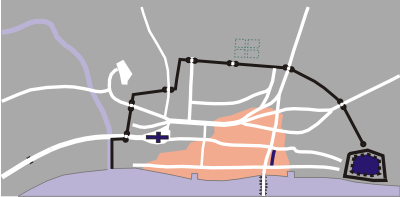
Extent of fire damage on 3rd September (with thanks to wikipedia for image)
Action at last
Whilst running around protecting foreigners and Catholics and bringing some order to the crowded streets, gradually James establishes working parties – each with orders to pull down houses to slow the spread of the fire. Furthermore wealthy citizens began paying for hired labour to help with the efforts. It was not much but we start to see the types of actions that will eventually save London.
See: Sunday 2nd September - The Fire Starts
Tomorrow: Tuesday 4th September – The Fire at full fury!
This article is one of a series connected with the release in August of the new paperback of The Last Seal my historical fantasy set during the Great Fire of 1666.

September 1, 2011
First day of the Great Fire of London: September 2nd 1666
Here by ye permission of heaven, hell broke loose upon this Protestant city. Original Engraving on the Great Fire Mounment
Jane called up about three in the morning, to tell us of a great fire they saw in the City. So I rose, and slipped on my night-gown and went to her window, and thought it to be on the back side of Mark Lane at the farthest; but, being unused to such fires as followed, I thought it far enough off, and so went to bed again, and to sleep. . . . By and by Jane comes and tells me that she hears that above 300 houses have been burned down tonight by the fire we saw, and that it is now burning down all Fish Street, by London Bridge. So I made myself ready presently, and walked to the Tower; and there got up upon one of the high places, . . .and there I did see the houses at the end of the bridge all on fire, and an infinite great fire on this and the other side . . . of the bridge. . . . Samuel Pepys Diary for 2nd September 1666
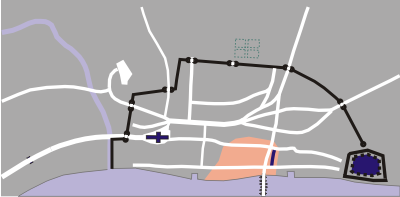
Extent of Fire damage on 2nd September (with thanks to Wikipedia for the image)
In 1666 London was a bonfire ready to light. It was built of wood and thatch buildings – teetering tenements that leaned close together. It was full of foundries and bakers, glaziers and tanners all with fires. Its warehouses stored vast quanities of combustible material. It had little in the way of effective fire fighting procedures. The summer had been long and hot and the city was dry. All it took was a spark.
Thomas Farriner (or Faynor) was the King's baker on Pudding Lane near London Bridge. He baked ships biscuits for the Navy. On Saturday 1st September he had retired to bed but someone – himself, his maid or his journeyman had forgotten to put out the fire. Wood, ready for the mornings baking was stacked nearby. Between midnight and 1am on Sunday morning 2nd September it is assumed that a spark from the fire must have ignited the wood. This spread and soon the bakery was in flames. Thomas and his family escaped out of an upstairs window BUT their maid did not escape. Afraid to cross the gap to the roof behind she stayed behind and perished.
Call the Mayor
The fire spread quickly and soon the entire street was on fire. Around the time that Pepys was woken on Seething Lane a little to the east, the Mayor Thomas Bloodworth was summoned and on inspecting the fire made the quote that wouldcome back to bite him later: "Pish! A woman could piss it out". He returned to bed without giving any orders to pull down any houses to creat fire breaks.
Those trying to fight the fire struggled on but effort were hampered by the fact the pump nearest Pudding Lane was broken. There was some attempt to bring fire engines to the scenes but these were huge and heavy and could not reach the scene.
Pepys takes action but the Mayor does not!
In the morning Samuel Pepys realised that the fire was spreading fast and would soon by out of control. He hurried to White Hall to see the king. Charles II ordered him to tell the Mayor to pull down houses and to take the offer of extra troops from The Duke of York's guards (commanded by his brother, James). Pepys hurried to see Bloodworth. he found the mayor in a state of hysteria, complaining that no one would obey him. Bloodworth refused the offer of troops. This was because the City had deep suspicions about the crown and indeed had been strongly for parliament during the civil war of only 20 years before. City officials had a fear of royalist troops in the city and wanted to avoid that. Bloodworth also ignored the king's orders about pulling down buildings, fearful that he would be held financially responsible.
The King views the scene
The King sailed down the river in the afternoon and was apalled at the spread of the fire and even more astonished that his orders had been ignored. He overrode the authority of the mayor in the area west of the fire and started the process of having house pulled down.
Too late
Even the King's intervention was too late. Strong winds from the south and eats was driving the fire on. In the evening Pepys took a boat to an alehouse on the south bank of the Thamas and stayed there till darkness fell. He wrote later that they could see the fire on London Bridge and across the river, "as only one entire arch of fire from this to the other side of the bridge, and in a bow up the hill for an arch of above a mile long: it made me weep to see it."
Tomorrow: Monday 3rd September – The Fire Spreads
This article is one of a series connected with the release of the new paperback of The Last Seal my historical fantasy set during the Great Fire of 1666.

August 31, 2011
What was England like in 1666?
by
Richard Denning
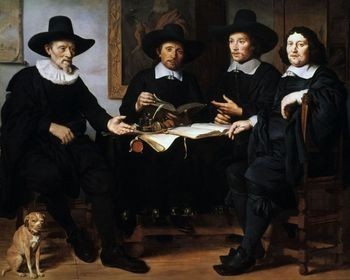
This article was originally posted as a guest post on Above Average Below Special .
This post is part of a blog tour celebrating the release of my historical fantasy novel, The Last Seal. which is set during the Great Fire of London in 1666. The 17th century world may not be familiar to many readers so this post will give you a brief idea of the mindset of people on the eve of the fire. What did the people worry about and what were their fears in that summer of 1666?
The population of all of England was only about 4 million people at this time. Greater London had about 300,000 people. Most of the land was rural and people were used to living in small communities except those in the big cities. Nevertheless news did travel about and there are many elements that go into the mix to make up your average Englishman or woman in 1666.
England was a land where people still remembered the English Civil War of 1642 -51. This had ended only 14 years before and large numbers of the population had fought in the war. Indeed 100,000 people had died in the civil war which it may surprise you to know is a higher % of the population than losses in World War One or Two! That war had shown the deep divides in the land and many of those divides still existed.
At one level the war had been fought between those who believed in the rights and authority of parliament and those who believed in the sovereignty of the King. But it was not as simple as that. Many who fought on one side or the other did so for religious convictions with the Puritans siding with Parliament and those with sympathies for the established church or who were catholic more often favouring the king. Some followed their heart which told them that duty to the king was paramount. Others believed that in opposing the King's army they were acting to free him from poisonous elements that influenced him.
In the end King Charles I had fought against parliament and lost. He was beheaded in 1649 and the land ruled by a rump parliament answerable to the army and ultimately to Oliver Cromwell who eventually became a dictator. After Cromwell died the country slid into chaos and in the end it was the same army that recalled Charles II who returned in triumph in 1660.
In 1666 King Charles II had only been king 6 years. There were many who did not fully trust the king and a good number who opposed his restoration and believed in a republic. Some would go as far as armed rebellion or attempts at assassination. There were at least half a dozen plots against the King in those first 6 years. Charles responded by introducing a robust organisation of spies and informers. Because of these attempts to overthrow the king there was great fear of more Catholic "papist plots" like the Gunpowder plot of 1605 and the more recent attempts on the king's life.
Mistrust was not just confined to home spun plots and enemies. In 1666 England was at war with both Holland and France over domination of the seas and of world trade and everyone was paranoid about foreign spies. As a result all foreigners were viewed with suspicion and stories abounded about atrocities inflicted by these other nations.
This was also a time of superstitions and a period when people believed in omens and magic. The fire occurred during a time when people were tried and hanged for witchcraft – something like 1000 people had been executed as a witch in the century before 1666. It was also a year particularly associated with evil omens and signs. So there was a solar eclipses in the 1666. Comets had been seen in the skies the year before. There were lunar eclipses. All these events were harbingers of doom.
Doom seemed likely to many that year. Although even in our own time every few years people predict that the world will end, many people really believed that 1666 was the end of the world!! This was in part linked to the fact that in the Book of Revelations there is a passage that says that the number of the beast – of the devil is 666. Several famous astrologers has also predicted a great plague in 1665 and a fire in 1666. No doubt many others predicted other events that DID NOT happen so we should not read much into these predictions that did come to be true BUT of course such predictions added to the feelings of anxiety and paranoia that seemed to prevalent at this time.
Of course many people lived their lives concerned with the simple facts of existence. In a time of widespread poverty just getting through each day was a struggle. Nevertheless you can well imagine what, taken as a whole, this mix of fears and anxieties produced in the average man in the street. It did not take much to stir up the London mob and there was more than enough provocation due to the Great Fire.
Some of these elements – fear of conspirators, state sponsored spy organisations, religious and political tensions and the natural fear of foreigners and even those who are concerned with just getting through each day I have tried to reproduce in The Last Seal.
To read the first part of The Last Seal visit my website here:http://www.richarddenning.co.uk/thelastseal.html
Check out the books Facebook Page:
http://www.facebook.com/TheLastSeal
I am on Twitter:
http://twitter.com/#!/RichardDenning



